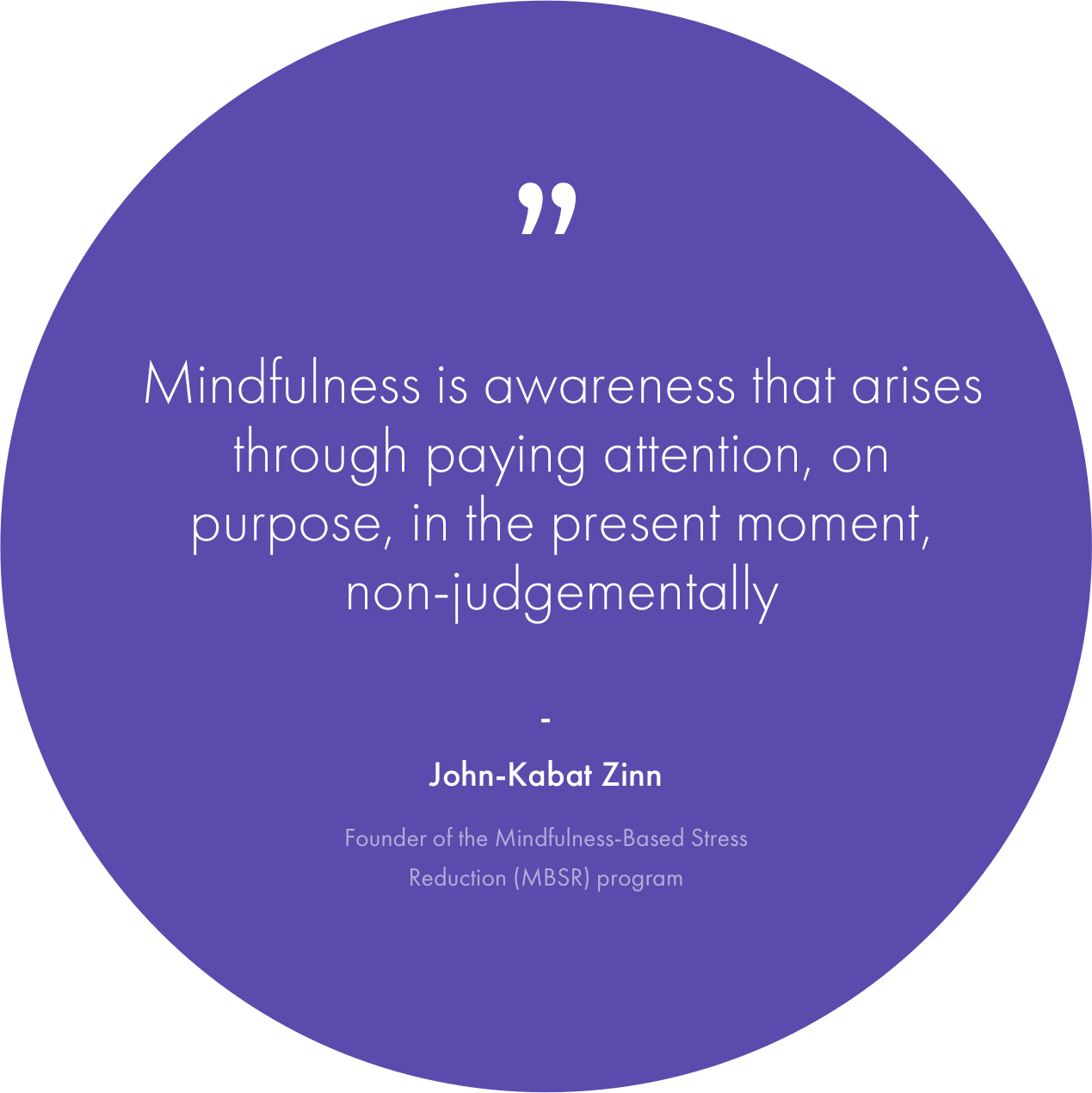At DesignerUp we practice mindfulness and meditation as a means to ground our personal and business experience and presence. We hold it as a philosophy in order to allow compassion and empathy to guide our work and interactions with the world. With issues like tech addiction, privacy concerns, the #metoo movement, generation burnout, mental health problems, diversity and inclusion issues and economic instability on the rise it seems more important than ever to acknowledge, take responsibility for and safeguard against doing harm to ourselves and others. The tech we build holds great power and influence and with that, comes great responsibility.
The products we create are not divorced from ourselves and we are not divorced from each other. In order to make better products and better people, a holistic approach to the internal and external factors that drive creation, innovation and communication are needed.
In this series we want to share our philosophy of Mindful Design and Interaction and deep dive into how we approach creating more mindful products and businesses and how you can apply the same to any role or stage of development (personal and professional) that you find yourself in.
The series will be a mix of think pieces and interviews with thought leaders to foster conversation and allow us to be present with each others struggles and perspectives.
What does it mean to be mindful?
Mindfulness simply put, is paying attention on purpose to what’s happening inside and around us in the present moment, without labeling or judging what we observe. While the act of mindfulness is quite simple (turning your attention to the little details), it’s the intention that can take some practice (doing so without judging, naming, rejecting or clinging).

Mindfulness is what happens when we combine the act of attention with the quality of intention.
Where does the idea come from?
Mindfulness practices are often taught secularly, but their roots reach back to the early teachings of the Buddha and are based on Zen, Vipassanā, and Tibetan meditation techniques. Individuals who have contributed to the popularity of mindfulness in the modern Western context include Thích Nhất Hạnh, Herbert Benson, Jon Kabat-Zinn, Richard J. Davidson and Alan Watts.
Since the 1970s, clinical psychology and psychiatry have developed a number of therapeutic applications based on mindfulness for helping people experiencing a variety of psychological conditions.
The ability to observe things as they are, with an openness and acceptance rather than a judgement, is where the true power of mindfulness lies. It’s our rumination, mind-wandering and judging of things that can lead us to feel stressed, anxious and overwhelmed [1] and often disconnected from ourselves and each other.
Creativity and Mindfulness
There’s a lot that the practice of mindfulness can teach us about design. Art, like mindfulness, springs forth from the well of awareness. In the visual arts, we reproduce what we observe or imagine through color, shape and texture. During the creative process, a circle is not good or bad, it is simply a circle. The color green is not ugly or beautiful, it is only a hue that our eyes see and our brain interprets and assigns a name to. Whether we label it beautiful or grotesque is merely a construct of the observer, in the end it is just art.
As the observer of your own space you are free to choose how you see things…good, bad or just as they are.
The act of designing something can be a mindful practice by turning our attention to the minute details and sensations of what is happening in the present moment. The feeling of the pen in our hand, the sound of the pencil against the paper, the sound of the mouse, the clicking the of the keys as you type. Anything can be a practice for mindfulness, for the designer, especially the product designer, there is a lot one can be mindful of.
By looking intentionally, we can adopt a sense of curiosity, non-judgement, increased empathy and compassion and begin to see ourselves and our environment, not as good or bad, but just, as is. This greater self-awareness and ability to regulate one’s emotions is part of why mindfulness is so effective. [2]
Both mindfulness and creativity are innate inner resources that we can tap into at any time.
Empathy and intention
With the rise of design thinking and human-centered design we are starting to look more sincerely at how we can be more empathetic towards our users and more understanding of their problems and needs. Mindfulness is an important skill because it leads to more self-awareness and less judgement and bias which can result in clearer research outcomes and allows us to develop a more open and accepting attitude towards others.
You cannot fake empathy
It's important to take personal responsibility, first to become self-aware of our patterns and behaviors and to revisit and reiterate our intentions often, second to practice when it's most difficult and third to acknowledge that the issues we may be having; be it with our users, our problems, our business our workplace or environment, were either consciously or unconsciously created by us to some degree. From that point we can start to do the real work of being empathic and holding the intention of doing better and being better.
We are often times full of well-meaning intent that leads to misguided actions.
Mindfulness is a qualitative tool we can use to measure how our ideas, rhetoric, and the experiences we craft impact our work, ourselves, society, the environment and the future. It's a way to test and iterate on ourselves and how we show up.
Mindfulness is a qualitative tool we can use to measure, test and iterate on ourselves and how we show up.
As UX designers - If we are not truly open and non-judgmental, we will not be able to build the trust and rapport that is needed to conduct successful UX interviews or create useful and meaningful products.
As project managers and CEOs, if we do not address our own issues, behaviors and motivations, they will inevitably seep into our workplace, our culture and the attitudes of our employees and we will not be effective leaders.
As UI designers and developers if we aren't able to communicate effectively with each other, see each other's perspectives and be patient, we will not be able to create an optimal and delightful system to deliver our intended result.
We enrich ourselves first by internally expanding our self-awareness and self-compassion and enrich our relationships by extending that outward into the world and the work that we do.
While we as designers, makers, producers and builders are trying our sincerest to have empathy towards our users with designing thinking methodology and user-centric design, let's not forget to have it towards ourselves, take time to question our motivations and address our personal issues, mental and physical health, because everything we build and do, every relationship we have is merely an extension of ourselves.
Everything we build and do, every relationship we have is an extension of ourselves.
Empathy is a choice and one that we need to practice constantly. The problem is most of us are not taught how to be mindful or empathic. In this series we are going to explore different ways; through think pieces and interviews, that we can practice mindfulness and cultivate empathy in our work as producers, makers, influencers and humans.
Whether you're struggling with imposter syndrome, anxiety, feeling slighted by the industry or struggling to become successful or belong we can all individually and collectively benefit from the tenets of mindfulness. Stay tuned as we dive deep into exploring the applications and possibilities together.
Sources:
1. Matthew Killingsworth and Daniel T. Gilbert, "A Wandering Mind Is an Unhappy Mind," Science 330, no. 6006 (2010)
2. Davis, “What Are the Benefits of Mindfulness?” 201.

